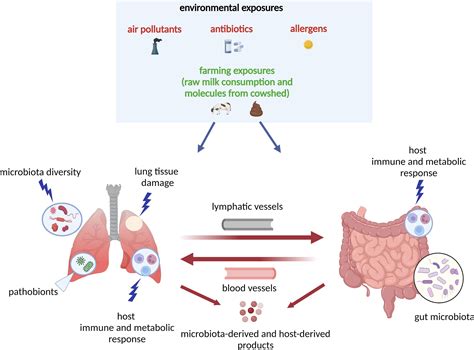The Gut’s Hidden Powerhouse: Metabolism and Aging
As men cross the threshold of 40, their bodies undergo a myriad of physiological shifts. Among these, changes in metabolic efficiency and energy utilization become particularly pertinent. While diet and exercise are widely recognized factors, a burgeoning area of research points to a less obvious, yet profoundly influential player: the gut microbiome. This complex ecosystem of trillions of microorganisms residing within the digestive tract holds surprising sway over how efficiently our bodies convert dietary fats into usable energy.
The gut microbiome isn’t merely a passive bystander in digestion; it actively participates in numerous metabolic processes. These microscopic inhabitants break down otherwise indigestible dietary fibers, synthesize essential vitamins, and modulate the immune system. Crucially for our discussion, certain bacterial species have been identified as key players in the metabolism of lipids, influencing everything from fat absorption to storage and the production of short-chain fatty acids (SCFAs), which can serve as an energy source for host cells and impact systemic metabolism.

The Male Microbiome: Unique Considerations Over 40
While the gut microbiome is diverse across all individuals, there are subtle yet significant differences between sexes, influenced by hormonal profiles, lifestyle choices, and genetic predispositions. For men over 40, hormonal changes, particularly the gradual decline in testosterone, can impact gut integrity and microbial composition. Furthermore, age itself often brings shifts in dietary patterns, activity levels, and medication usage, all of which can sculpt the microbial landscape.
These age-related and sex-specific microbial shifts are not just academic curiosities; they have real-world implications. A less diverse or imbalanced gut microbiome (dysbiosis) in older men might lead to increased systemic inflammation, altered nutrient sensing, and impaired mitochondrial function—all factors that can directly undermine the efficiency of energy production from fats.

Unpacking Fat Metabolism: From Diet to Usable Energy
The process of converting dietary fats into usable energy is intricate. It begins with the digestion and absorption of fats in the small intestine, assisted by bile acids—compounds that the gut microbiome can significantly modify. Once absorbed, fats are transported to various tissues, where they can be stored or oxidized (burned) for energy. This oxidation primarily occurs in the mitochondria, the “powerhouses” of our cells.
Specific gut bacteria can influence this entire cascade. For instance, some microbes can alter bile acid profiles, affecting fat emulsification and absorption efficiency. Others produce SCFAs like butyrate, propionate, and acetate. While acetate can be converted into fat, butyrate and propionate can influence host energy metabolism, insulin sensitivity, and even fat oxidation in peripheral tissues. A microbiome that favors the production of beneficial SCFAs might, therefore, promote more efficient fat utilization.

The Microbial Link to Metabolic Efficiency in Later Years
Consider two men over 40, consuming similar diets. One might effortlessly maintain a healthy weight and energy levels, while the other struggles, despite equal effort. Their gut microbiomes could be a crucial differentiating factor. A gut rich in certain beneficial bacteria (e.g., specific strains of Bifidobacterium or Lactobacillus) might enhance the extraction of beneficial compounds from food, optimize bile acid metabolism, and produce SCFAs that signal the body to burn fat more effectively. Conversely, a microbiome dominated by less favorable species might promote fat storage, increase inflammation, and reduce mitochondrial efficiency.
These differences aren’t just about weight; they impact overall energy levels, cognitive function, and the risk of metabolic diseases like type 2 diabetes. The efficiency of converting fats into energy directly influences cellular vitality and systemic health, underscoring the profound importance of a balanced gut ecosystem, especially as we age.

Optimizing Your Microbial Allies for Enhanced Energy
While research is ongoing, the implications for men over 40 are clear: nurturing a healthy gut microbiome can be a strategic move for boosting metabolic efficiency and energy production. Dietary interventions are paramount. A diet rich in diverse plant fibers (fruits, vegetables, whole grains, legumes) provides prebiotics, which are food for beneficial gut bacteria. Fermented foods like yogurt, kefir, sauerkraut, and kimchi introduce beneficial probiotics directly into the gut.
Beyond diet, lifestyle factors such as regular exercise, adequate sleep, and stress management also profoundly impact gut health. Limiting processed foods, excessive sugar, and unhealthy fats can further support a balanced microbial environment. Understanding and potentially modulating these subtle microbial differences could unlock new avenues for maintaining vitality and robust metabolic health for men over 40.

Conclusion
The intricate relationship between the male gut microbiome and metabolic efficiency, particularly concerning fat conversion into energy for men over 40, is a compelling frontier in health science. As we gain a deeper understanding of how these microbial communities function and interact with our physiology, the potential for personalized interventions to optimize energy, combat age-related metabolic decline, and enhance overall well-being becomes increasingly promising. Investing in gut health isn’t just about digestion; it’s about fueling a vibrant, energetic life.




